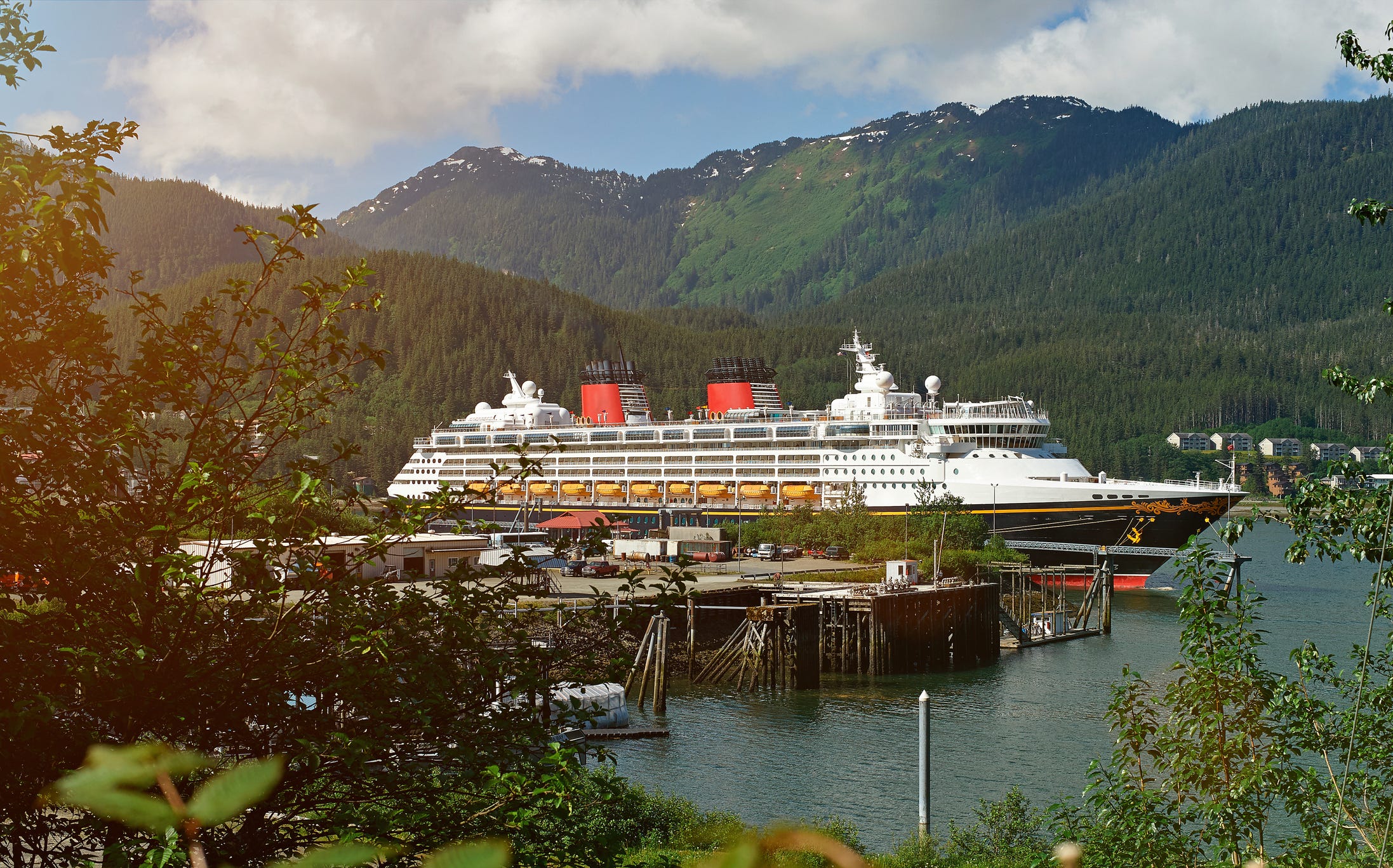Table Of Content

Revel in the rousing vibrations of May sunlight and lookout for humpback whales as they make their first appearance of the year. Or, explore the outdoors on a peaceful boat tour through deep fjords and enjoy a relaxing train ride up the sweeping mountains. As the driest month of the year, May provides optimal conditions to experience the great outdoors. While temperatures cool off in September, witness schools of halibut glisten beneath the Alaska waters and try your hand at casting a reel. Or, strap into a dog sled and venture over frosted terrains that make for an unforgettable ride. While the end of cruising season brings darker skies, guests can discover the secrets behind the mystifying Northern Lights.
Alaska Cruises In June
The weather in June is usually warmer and more stable than May, with temperatures ranging from the mid-50s to the mid-70s. The longer days allow for more time to explore the state's natural beauty, and the scenery is simply stunning. The warm temperatures also make it an ideal time to participate in outdoor activities. You will see plenty of wildlife during your Alaska cruise throughout the cruise season, including whale watching, sea lions, bears, & birds.
Must Pack Items For Any Cruise
Weather, ocean conditions, and limited sunlight make winter cruising to Alaska impossible. Be aware that if you choose to go on one of the early or later sailings, tours may not be available. While the temperatures and rainfall numbers are averages, I have witnessed extremes.
What is the best time of year to see the northern lights on an Alaska cruise?
The enchanting colours invite you to marvel at the miracles of Mother Nature that so often act as the inspiration for treasured postcards. With only 12 hours of sunlight, temperatures range from around 4 to 10 degrees. Cruise lines often run sales in the fall or in the early months of the year (a period known in the cruise industry as "wave season"). You can take advantage of discounted fares, free upgrades or complimentary add-ons, such as Wi-Fi, gratuities, restaurant meals, beverage packages and tours. Some of the most desirable cabins might be sold out; being flexible about your sail date or itinerary can help.

New To Cruising
Shoulder season is the time between peak season and off-season when there are fewer cruisers and lower prices. While it is possible to see humpbacks during the entire cruise season (April-October), your best bet for whale watching will be the months of June, July, and August. They are quite an awe-inspiring sight to see as they travel in pods, breech, and feed.
What to Expect on an Alaskan Cruise in September
The Best Time to Cruise Alaska Month by Month - Cruise Critic
The Best Time to Cruise Alaska Month by Month.
Posted: Mon, 01 May 2023 07:00:00 GMT [source]
Look to UnCruise Adventures, Alaskan Dream Cruises, Hurtigruten and Lindblad Expeditions for the best adventure cruises. If you've got active teens who have an interest in nature and the environment, an expedition voyage could be exactly what will keep them engaged and off their devices. Late May and early June are the best possible times to view a momma moose and her calves in Alaska. If you do see these majestic creatures hulking around, stay far back (at least 50 feet) and never disturb a lone calf, as mom is somewhere nearby. Sign-up for any of the following email series to help plan your Alaska trip. If you want to see fall foliage ashore, wait until the first week of September.
The average rainfall in Juneau during the month of April is 2.77 inches. Although the rain isn’t convenient, it is the reason for the lush vegetation you enjoy. However, it’s important to remember that this area is part of the world’s largest temperate rainforest. Holland America Princess, and Royal Caribbean have Alaskan Inside Passage cruises departing from Vancouver at the end of April. Carnival has 14-day Alaskan cruises departing from Seattle and Long Beach in late April.
Alaska Cruise Weather by Month
On the water, we rarely passed any other ships or boats, aside from fishermen out for their catches. Peak cruising months, July and August, are the best time of year to cruise to Alaska. During these months you will have the warmest weather and the greatest chance to see wildlife. The warmer the weather, the better your chance to view a once-in-a-lifetime occurrence called “calving.” This is when a large chunk of the glacier separates in a giant icy landslide. Weather is a pretty big consideration when it comes to booking an Alaskan cruise. If you have a low tolerance for cold weather, cruising Alaska during the warmest months of July and August is a better choice.
A limited number of cruises in October (predominantly on Norwegian Cruise Line) make it possible for cruisers to experience a taste of Alaska in winter without sub-zero temperatures. You will want to bundle up; the average temperature in Juneau in October is 39 degrees. Keep an eye out for seabirds and songbirds, seals, Steller sea lions and humpback whales. Marine life is so prolific that some small-boat shore excursions guarantee you will see animals. Bears will be fishing; in late August, they will be looking for blueberries, which also become a featured item on restaurant menus. Toward the end of August, you'll see leaves changing to fall colors.
After the Summer Solstice in June, Alaska begins losing daylight with each passing day. While the days are still longer than those in the Lower 48, they are getting slightly shorter throughout July. A hat, gloves, and a winter coat would be a good idea to pack for an Alaskan cruise, especially if you depart in April, May, or September. The high temperature in May in the capital city of Juneau, averages in the mid-50s, with lows in the 40s.
Sit in a bar and talk to the locals as they prepare for the long winter ahead. Each month has its advantages, not the least of which is discounted pricing in the spring and fall shoulder seasons. The best time to visit Alaska to see the northern lights, also known as the aurora borealis, is during the darker months when nights are longer. Although the northern lights can potentially be visible all year, your chances are much better from late September to early October. The best time to spot bears in Alaska, particularly grizzly bears, is during the summer months, with June and July being the peak. The Alaskan cruise season runs from May to September, encompassing a period of rapid change in wildlife, weather, pricing, and crowds.
For example, flightseeing via fixed wing or helicopter is a popular way to see glacier fields and spectacular mountain vistas, but small aircraft are sensitive to weather conditions. Choosing to cruise during the dryer months of May and June can help give you a better chance at participating in these weather-dependent excursions, although of course there’s never a guarantee. While gray whales are active in Alaskan waters during the early spring, most species, including belugas, orcas, humpback whales, and blue whales, peak between May and September. This partially explains why this stretch is much busier than other times of year for tourism in Alaska. Likewise, while weather should be colder during the shoulder seasons of May and September, Alaska’s weather is quite unpredictable. You might be surprised with warm days in September or chilly, rainy days in July!
Check ahead to make sure your itinerary will stop here, as it's usually only featured on longer 14-day cruises to Alaska. The good news is that means you can usually score some pretty good deals on Alaskan cruises. The bad news is that you have a high chance of your excursion getting rained out. Wildlife is out in full force, enjoying the lush green forests and flowing waters.
Weather typically ranges from 1 to a high of around 12 degree Celsius. May itineraries invite guests to pack sweaters and jackets for easy layering. Weather typically ranges from the 30s to a high of around 55 degrees Fahrenheit. Breathe in the tranquility of the shoulder season when you sail to Alaska in May or September. With fewer crowds in May, take a step inside Alaska’s finest fisheries and taste fresh king salmon — a local delicacy — as they’re plucked from the cool waters.



